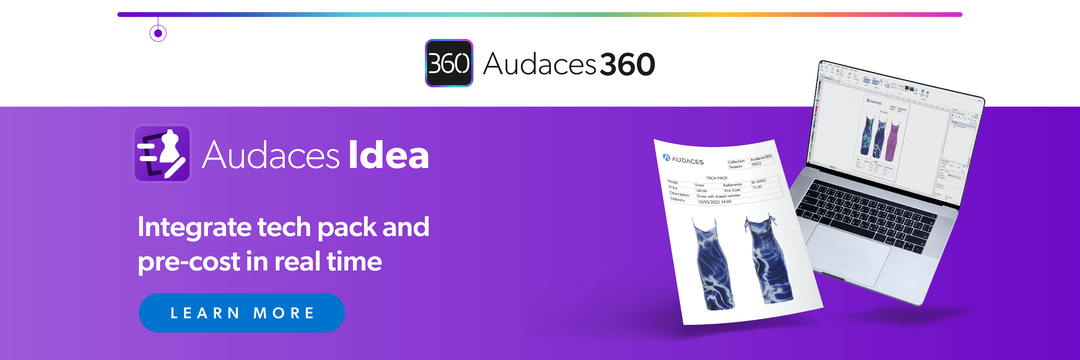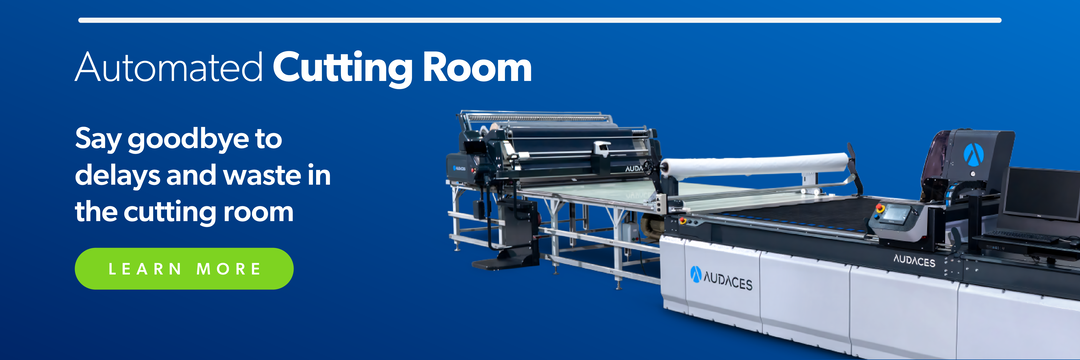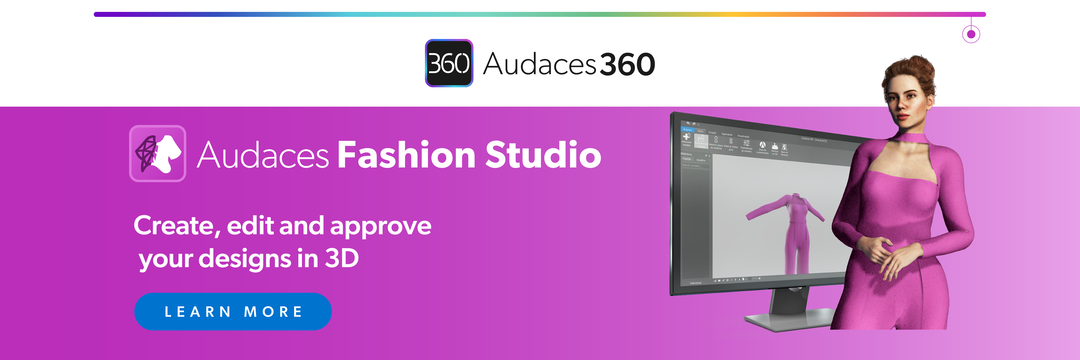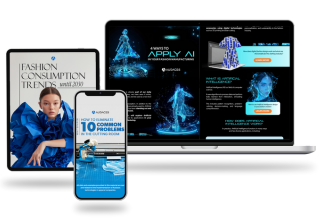Summary
- Technology is quickly advancing to streamline industrial processes, saving time and reducing costs.
- The fashion industry is no exception, and technological innovations are enabling apparel manufacturers to grow and increase their profits.
- Experience the best that textile technology has to offer. Try Audaces360 solutions for free now!
Just as fashion trends evolve, the way we make it is also changing. New textile technologies emerge over time, and it is important to be aware of them.
It allows you to increase the efficiency of your operations and respond more quickly to market demands. As a result, this translates into increased productivity and profits.
Our comprehensive guide will help you understand the innovations that are changing the fashion and textile industries.
Enjoy your reading!
Sumário
What is the importance of textile technology for the fashion industry?
Staying on top of technological advancements is crucial for making informed decisions for your fashion business. Knowing the latest developments allows you to make investments with a quick return.
Furthermore, these technologies are the key to unlocking new ways to streamline processes and optimize production.
This is the path to expanding your company, reducing costs, solving production bottlenecks, and increasing profits.
Consider the example of the fabric spreading process. Initially, the only way was to do it manually, which requires two people working together.
It could lead to errors such as tension differences between layers and uneven edges. In fashion production, this translates to wasted material.
An alternative available today is the semi-automatic spreaders. They make the process easier but still require full-time human intervention and are not immune to issues.
Automated spreaders, on the other hand, make everything on their own, according to the commands given. They ensure precision, maximize fabric use, and guarantee high-quality final products.
See the difference that keeping up with textile tech can make? It applies to all the design, development, planning, and production processes in a garment manufacturing company.
Learn more: Explore the fashion future demands and anticipate what’s next in the market
After all, what is textile technology?
Textile technology encompasses all the technological advances in textile industry developed through science and engineering to make processes more efficient.
These innovations are the result of in-depth research on the challenges faced by both industry and consumers.
Based on their findings, they create solutions to enable businesses to produce efficiently and enhance customer satisfaction.
You can call textile technology any type of material, software, or equipment that addresses an issue with innovation.
Learn more: Find out how – and why – to apply textile automation in your company
4 new textile technologies you should know about
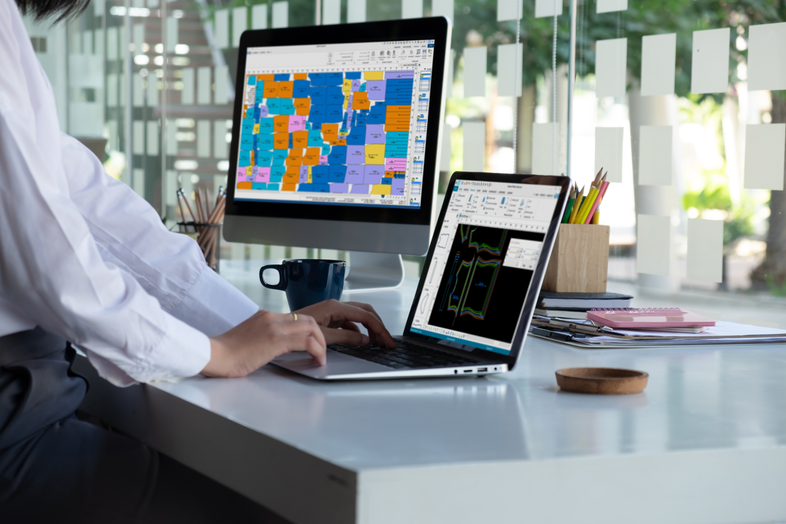
1) Fabric review and inspection
To maintain the quality of the final product, it is essential to guarantee that the fabrics are free of defects.
It is important to make sure that they do not have holes or flaws, as this compromises production. There may be a shortage of the planned number of pieces, causing potential delays.
Textile technology can be a great help to prevent this kind of issue. Audaces Cutting Room, for example, offers a feature that identifies defects even at the spreading stage.
This ensures quality throughout the entire operation, leaving the customer satisfied and keeping your business competitive.
Learn more: How can mass production boost your apparel manufacturing?
2) Big Data and Artificial Intelligence
All kinds of industries are widely exploring these resources nowadays. They have the power to generate data and insights to support decision-making in all sectors.
Take the example of fashion research. Artificial Intelligence can analyze vast amounts of social media data and consumer searches to predict upcoming trends.
To translate this into collections that resonate with consumers, fashion designers can explore the power of Audaces Sofia.
It is the first fashion-specific AI, and it has the power to greatly contribute to creations. It generates prints and creates realistic garment variations with ease and precision.
All of this while promoting more sustainable processes, as it eliminates the need for physical samples.
At the same time, Big Data can analyze customer purchase history and preferences, for instance. By identifying customer needs and desires, companies can tailor production demands, potentially leading to increased sales opportunities.
Learn more: 4 ways to apply AI in your fashion manufacturing
3) Optimized fabric saving
Textile technology allows for various ways to reduce costs in apparel manufacturing. One of them is through intelligent fabric savings.
Maximizing fabric use, in addition to reducing costs, ensures that your production will run according to plan.
Those who manage production know how frustrating it can be to not complete the correct number of pieces due to a lack of fabric!
Solutions like Audaces Marker use algorithms to calculate the maximum use of raw materials. It creates markings according to your patterns, considering the characteristics of the fabric and spreading.
You also have the possibility of combining different items made from the same fabric. This speeds up production and can increase fabric usage.
You can integrate Audaces Marker with Audaces Supera to achieve even better results. Audaces Supera is an AI-powered marking server designed to reduce time and minimize waste.
This solution of textile technology enhances fabric and production savings, ensuring maximum efficiency in time and raw material management.
It handles and processes marking queues sent by one or more computers, freeing up the workstation for planning the next markings.
Learn more: How to obtain quality and precision in the cutting fabric process?
4) Smart production management

Relying on paper and pen to manage collection development and production is risky. Data flaws and the difficulty of sharing information can be harmful to your company.
Fortunately, there are already textile technology solutions specifically designed to address these issues.
Specialized software exists to monitor the entire product cycle, from end to end. We call them PLM (Product Lifecycle Management) systems. They provide an overview of all the steps involved in developing a new item.
Audaces Isa is a PLM system fully focused on fashion. It allows the teams involved in the creation and launch of collections to share information in a central tool. Everything is available online, so you can access it from anywhere.
With real-time monitoring, you can make adjustments and address issues as they arise. This optimization of processes can reduce the time to market for a collection by more than 30%.
When it comes to production, we have carefully developed Audaces ICF. Our experts have considered all the needs of those who manage this sector.
This is an intelligent textile technology that seamlessly connects people and equipment in a fully digital and secure manner.
You can access production demands and schedule cut orders. Audaces ICF monitors and alerts you to any disparities between the planned and executed tasks, automatically suggesting necessary corrections.
Learn more: How does technology in fashion impact the textile industry?
Benefits of new technologies for the textile industry
Textile technology offers a multitude of benefits for industry, enhancing various aspects from production to sustainable practices. Here are some key benefits:
- More efficient and sustainable production methods.
- Designing products using new and innovative materials with unique properties.
- Improved product quality and performance.
- Faster response times to changing market trends.
- Reduction of waste and risk of errors or delays.
- Business growth and increased profits.
Discover the best in fashion technology with Audaces
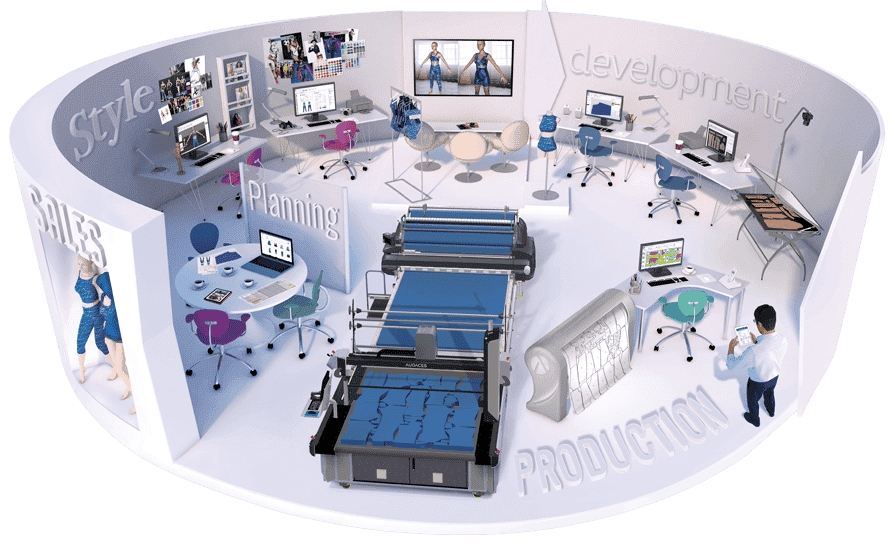
Audaces is a global leader in fashion technology, offering all-encompassing solutions for companies of any size and sector.
We leverage cutting-edge textile technology to create software and equipment to solve the challenges faced by apparel manufacturers.
Audaces360
Audaces360 stands as the most comprehensive software solution to optimize your entire creation, development, and production processes.
It functions seamlessly from start to finish, connecting your team and simplifying workflow.
These are some of the key benefits:
- Design garments with precision using 2D vector tools, generating automated spec sheets and pre-costs.
- Visualize and refine your designs on a virtual mannequin.
- Leverage AI technology to enhance your design process.
- Manage your collection end-to-end from the palm of your hand.
- Create accurate and efficient digital patterns for production.
- Optimize fabric usage and minimize waste with automated marking.
Audaces Cutting Room
Our customized Audaces Cutting Room project delivers a planned solution to match your unique production goals and demands.
A consultant will reach out to understand the intricacies of your company. After thorough studies, we will provide a comprehensive diagnosis and a personalized quote for your cutting room.
It includes the best software and equipment solutions textile technology has to offer!
Some benefits are enhancing both efficiency and accuracy with automated cutting technology, achieving consistent and precise cuts, minimizing waste, and guaranteeing quality.
Audaces Attiva
Audaces Attiva is an exclusive service that offers comprehensive planning and implementation of intelligent solutions for the entire apparel manufacturing process.
Our expert consulting helps companies improve their operations, especially if they are unsure where to begin.
Audaces Attiva consultants will identify the best solutions to optimize your time and resources, ultimately boosting your profits.
Download our infographic for free and get more insights on how to increase your company’s productivity!
FAQ
Staying on top of technological advancements is crucial for making informed decisions for your fashion business. Knowing the latest developments allows you to make investments with a quick return.
Textile technology encompasses all the technological advances in textile industry developed through science and engineering to make processes more efficient.
Fabric review and inspection, Big Data and Artificial Intelligence, optimized fabric saving, and smart production management.


